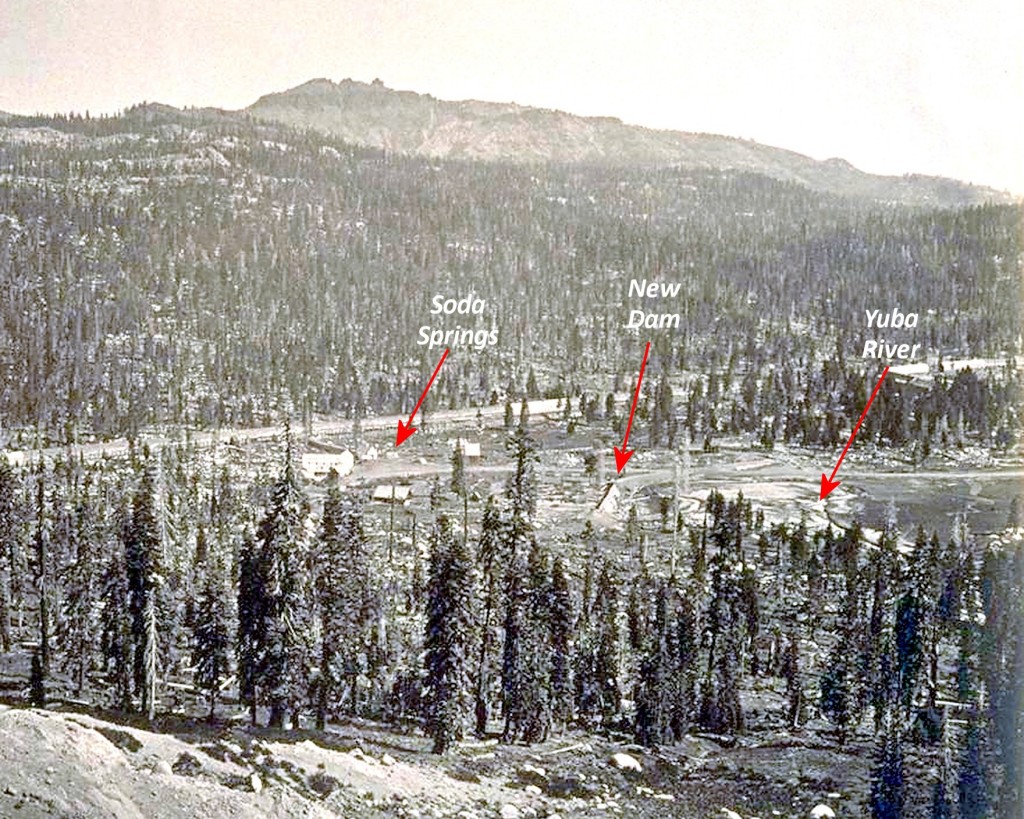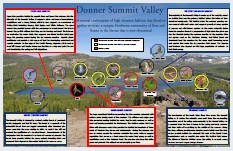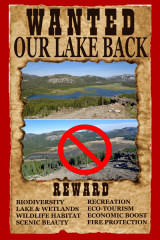It is really amazing what you hear and read about the Summit Valley and Van Norden Lake when you do some research. Any place as rich in human and natural history as the Summit Valley is bound to generate many myths. In this and future posts I would like to bust some of those myths with some real facts.
A recurring myth that you hear is that before there was a dam and lake in Summit Valley, there was a pristine meadow with rich wetlands teaming with biodiversity. If we just remove the dam, we can get back to that pristine time. The first problem with this myth is lack of information. There is really very little information about the prehistoric Summit Valley whose written history is only very recent. Prior to the first American expeditions starting in the early 1840s, there is no documentation about the valley. It is true that Native Americans passed through the valley for thousands of years, but unfortunately there are no written records describing the conditions in the Summit Valley prior to pioneer settlement. Even the first American pioneers that passed through in the 1850s and 60s on the way to California were doing just that, passing through. Other than a few diary entries, there was very little description of the conditions in the Summit Valley during pioneer times.
We may never really know what the Summit Valley looked like prior to the first emigrants passing through in 1844. It was only a short 20 years later that the first commercial road , the Dutch Flat Donner Lake Wagon Road, was built and only 3 years after that that the first railroad was running through the valley. By 1870 the Summit Valley had been extensively logged to provide wood for the railroad snow sheds, stock was being grazed in the meadow and the first dam was being constructed. By 1890 there was a dam that spanned the width of the valley and formed a lake that filled two thirds of the valley. What this means is that for the large majority of the modern history of the Summit Valley, it had been completely transformed and exploited by man. There is no one alive today that knows what the valley looked like without a dam or a lake.
![]()
All is not lost, however. Fortunately in 1867 a railroad photographer, Alan A. Hart, traveled over the summit to document the building of the railroad. While the railroad line was finished by this time, the new dam was still under construction and the lake had not been created yet. The first photo shown here is taken from what is now Soda Springs ski hill looking east down the valley. The grassy meadow is bisected by the Yuba river running through it. There are already stock fences present. The second photo is also from the same location but shows the western end of the valley with old Soda Springs and the new dam under construction. The Yuba river winds through this end of the valley in the absence of a lake or any wetlands.

It is clear from these vintage photos that prior to the construction of the dam there was no “natural” lake or wetlands in the Summit Valley. The meadow would have of course been completely saturated with water during the snow melt every year, but it would have gone seasonally dry by July or August (depending on the snow pack), once the melt water had drained down the Yuba. Without a dam to hold back some of the water, no lake would have formed and no wetlands could have been supported. The valley then would have supported just wet meadow, riparian and mixed conifer habitats. The open lake and wetland habitats that provide rich biodiversity today were not present. By definition, wetlands require a surface level water table and without a dam that would not happen in Summit Valley.
It is, therefore, a myth that the Summit Valley supported rich wetlands prior to the damming of the valley. Moreover, the removal or reduction of the lake will result in the concomitant removal or reduction of the wetlands that currently exist in the valley. The absence of this rich source of biodiversity would be a loss for all of us.



One Response to Van Norden Mythbusting